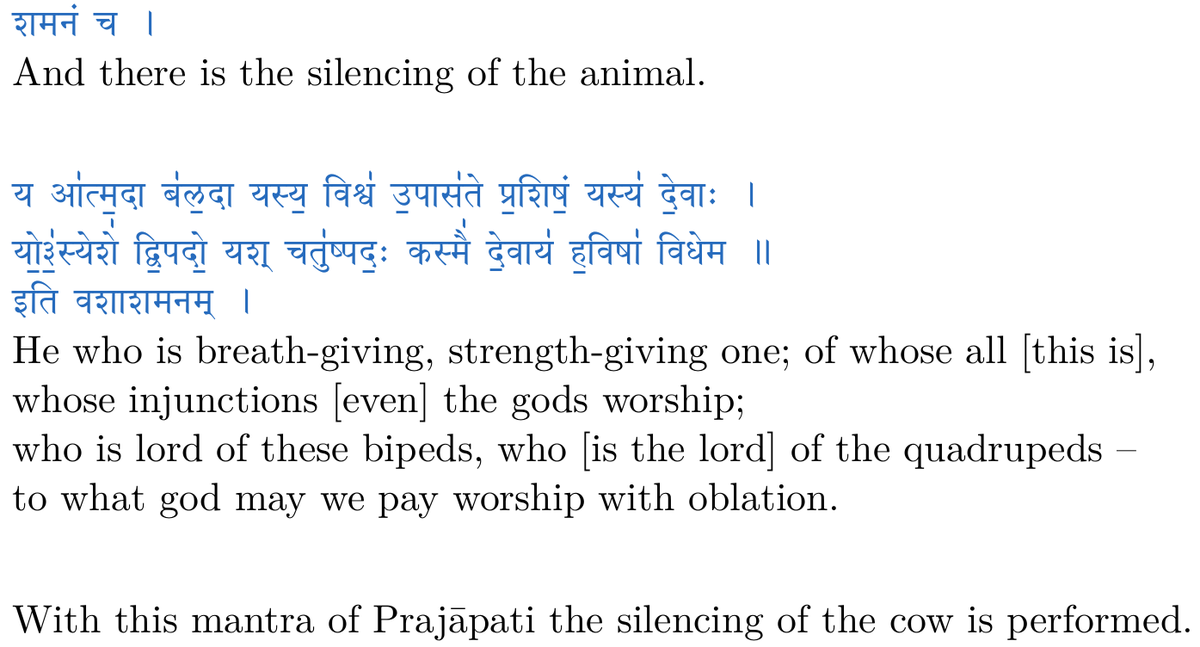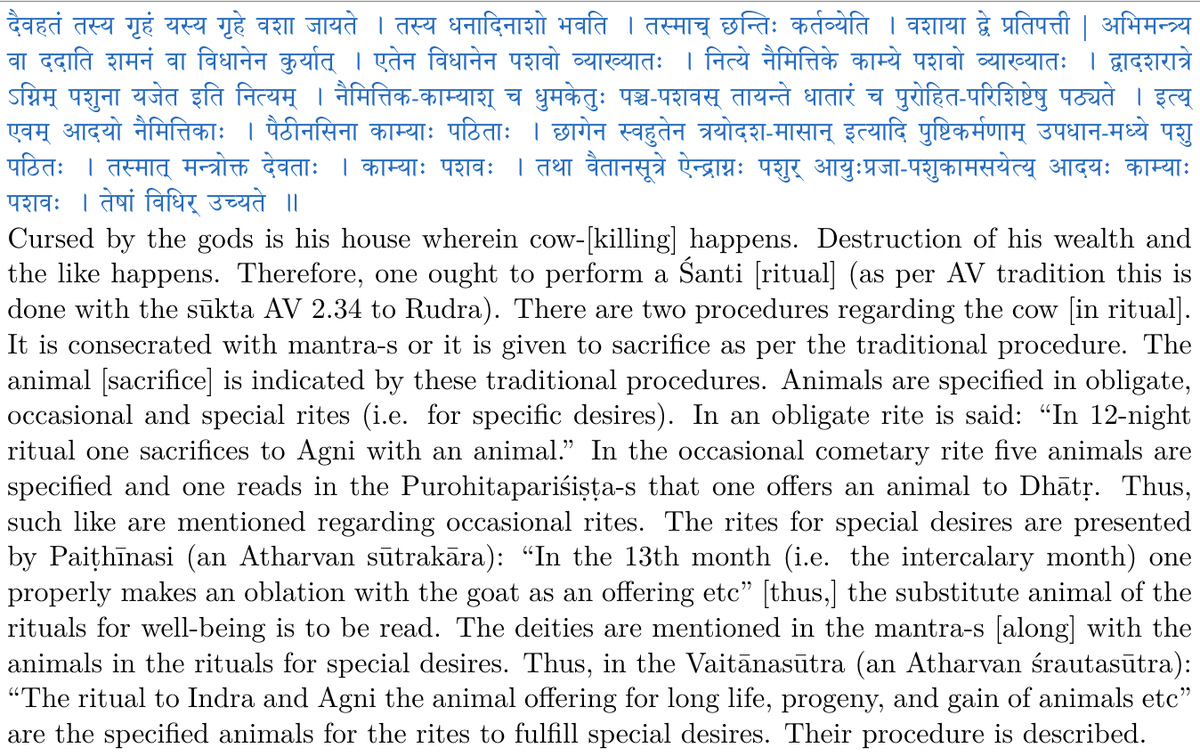Few comments since this topic is as perennial as the AIT issue among internet H -- of course you may not like it, so don't @ me. The domesticated Bos was a central animal for the subsistence of the Indo-European pastoralists on the steppe. It was also a major domesticate for the https://twitter.com/pashyaka/status/1345786629458436098
the pre-IE Indian peoples like the Harappans and the neolithic Ash Mound culture of southern India (i.e. the bUti-palli/halli-s; early Dravidians?). What is clear is that these pre-IE & circum-IE entry peoples of India consumed the flesh of cattle. However, it is like the female
animal (henceforth cow) was also valued for milk->curds/cheese(?) among both the Harappan and Ash Mound peoples. The former probably also used them as draught animals. The situation was similar with the IEans on the steppe with their version of Bos cattle playing a major role in
food (both diary and flesh) and as draught animals. Given their value for the IEans, the idea of the protection of cattle was central to their culture (independently of them consuming their flesh). Thus, the cattle raids& countering such were very central to their imagination.
Hence, we may infer that the concept of cattle-protection, emerged entirely independently of their consumption among the steppe IEans. For a IEan king whose wealth was animal herds such protection was a central role. Hence, the ideal of go-pAlana emerged long before beef-taboo.
It has simply continued in India as cattle continued to be economically important in the pre-modern and to a degree even in modern period. We know that among Indo-Iranians two opinions arose. One, following the ancestral custom, considered the bovid a valid sacrificial/culinary
animal. The logic behind this is simple: you sacrifice to the gods something very expensive. The bovine is a central animal of your society, so it is a costly sacrifice or in the case of a goghna for an esteemed guest a costly meal. Now on the other side the cow by way of milk is
a food-provider by a mechanism of greater importance than via flesh. Moreover, as they are mammals with emotional and behavioral overlap with ourselves, the cattle-rearers develop a bond with their animals. The bovine was already part of the divine sphere of the IE mythology --
the wife of rudra was specifically likened to a cow; so were other goddess. Hence, one can see the opposite sentiment arising the the cow (to start with specifically the female) should not be killed. Interestingly, a clear early expression of this is zarathustra's lament to
his god ahura mazdha, where he accuses kavi, karapana and uShija who have sacrificed cattle to the daeva-s: yasna 44.20. He is evidently pointing to none other than our ancestral people for this bovine killing. This sentiment was not limited to the Iranian side of the I-Ir divide
For parallel sentiments on our side of the divide see: https://twitter.com/GhorAngirasa/status/1345614532740222982
Thus, we can infer that even before the I-Ir split there were differing opinions on bovine sacrifice/consumption with the anti-cow-killing opinion being found both on the Iranian and Indian side. It is
Thus, we can infer that even before the I-Ir split there were differing opinions on bovine sacrifice/consumption with the anti-cow-killing opinion being found both on the Iranian and Indian side. It is
clear that zarathustra "weaponized" it against the deva worshipers. It is possible that this being presented as an ethical position enhanced the anti-bovine-killing faction even on the Indian side, but it is clear that not all Iranians or Indo-Aryans automatically shifted to that
position right away. However, after the IA and Ir had settled in their respective modern domains as settled civilizations over time the anti-cow-killing position became the dominant one. On the Ir side this might have been due to rise of the Zoroastrian strand of the Ir religion.
On the Indian side as the IA spread across the sub-continent and moved to a agriculture heavy economy the cattle were doubly important, not just for milk and transport but also plowing fields. This mean additional incentives against killing cows; hence, we may infer that by the
beginning of the common era the anti-killing position was widely accepted across most Hindudom and the opposite was taboo in most though not all contexts. That period also marked the wide acceptance of the shaiva & vaiShNava strands of the religion which had additional special
positions for the bovine (now including bulls) in the divine realm. The consequence was that the taboo only hardened. Notably, even in greater Iran the Sassanian emperor whose wife was a gupta princess was passed a decree banning cow-killing. 1 wonders if at that point there was
reinforcement from his Indian wife for IIRC the decree came shortly after his marriage. On the Indian side some role might have also been played by the rise of the jaina- and may be bauddha- mata-s in sections of the population.
Irrespective of the sacrificial offering of the bovine, it is a special or divine animal for the Indo-Aryans, thus it might not be killed in holy spots or shrines. The #2 and #3 were very conscious of this and repeatedly mention with glee as to how they desecrated H spots with
cow flesh and blood. Hence, the old idea of a H monarch protecting his kine now naturally joined the idea of fighting the Abe enemies who were kine-killers. Hence, it is justification is very much a political point like the H ruler protecting the head of the puruSha who provide
the "bauddhika" leadership for H society. Now, as for the vaidika rituals with the bovine sacrifice, taboo there are lengthy discussions among insiders as to what was the correct thing to be done: this is a clear sign of it becoming taboo over time. To start with expiations were
indicated: e.g. deployment of AV 2.34 to rudra as the lord of the animals. Subsequently, there was substitution and the bovine sacrifice came to be entirely eschewed. So what matters is that insiders who vaidika rites have come to this decision among themselves. Hence, what
impious outsider commentators tell us regarding our this tradition does not matter to our current practice because they come from pakSha-s seeking destruction of v1s rather than their hita. ity alam vistAreNa
As an illustration here is an example of the how within vaidika tradition the movement away from bovine sacrifice happened with specific reference to the atharvaveda. In the AV kaushika-sUtra, like several other kalpasUtra-s, bovine sacrifice is mentioned:
However, the below extract from the commentary on that sUtra by the scholiast keshava (from a time when bovine-sacrifice was a taboo) points to alternatives. It points a two step process:1. First, the sacrifice was probably accompanied by an expiatory rite with AV 2.34 the shAnti
he mentions that ought to be done if a cow is sacrificed. He then mentions that various rites do specific animal sacrifices but cites another ancient sUtrakAra paiThInasi son of mausalI to suggest that a goat is a substitute for the cow mentioned in the kaushikasUtra.This process
is part of the ongoing shifts within the vaidika tradition wherein at one extreme the original animal sacrifices were replaced by piShTapashu-s or flour-animals.

 Read on Twitter
Read on Twitter



